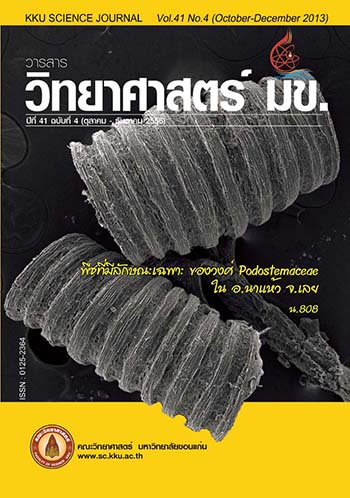Potential of Bacteria Isolated from a Dye Contaminated Site on Decolorization of Reed Dyeing Wastewater
Main Article Content
Abstract
The release of colored waste effluents from reed mat production may cause negative impact on water quality. This study aimed to isolate dye-degrading bacteria from reed manufacturing areas in Chanthaburi as well as to study the efficiency of the selected strains on removal of reed dye. At first, eighteen strains of dye-degrading bacteria were isolated by dye enrichment culture techniques. After that, the growth on Mineral Salt Medium containing 1,000 mg/l synthetic reed dye as sole carbon source and the exopolysaccharide (EPS) production ability of each isolate were determined. EPS has been shown to absorb dye. The results showed
that isolate A1 and A8 grown well on the tested medium and had high EPS’s producing ability (82-85%). The identification results found that A1 and A8 were belonged to genus Serratia and Klebsiella, respectively. After that, the dye removal efficiency of the selected strains was determined in MS containing 100 mg/l red dye. The treatments were incubated with shaking (150 rpm) at room temperature for 14 days. Serratia sp. A1, the most effective strain could reduce the color intensity at 11.56%. Therefore, A1 was selected to test for its efficiency in reducing the intensity of other reed dyes. This bacterial strain could reduce the color intensity of
yellow and mixed dye at 10.84 and 12.16%, respectively. Finally, Serratia sp. A1 was used to treat real reed mat effluent. The bioaugmentation flasks containing 100 mg/l dye and inoculum (OD600 = 0.1) showed the good activity of reducing dye color intensity at 12.89% after 8-day incubation.
Article Details

This work is licensed under a Creative Commons Attribution-NonCommercial-NoDerivatives 4.0 International License.


